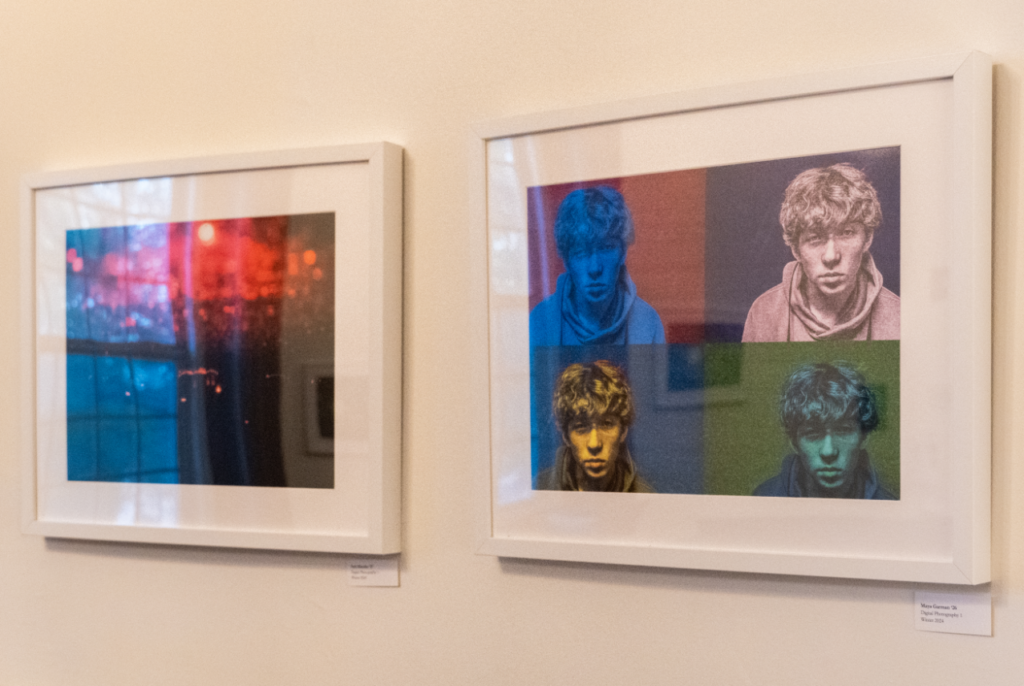
Graphics by William Gao/The Choate News
Painters can clean their brushes, put their canvases on the drying rack, and walk away once they’re satisfied with their work, making their art piece as personal or as impersonal as they want. Dancers, however, cannot walk away from their artistic device — they cannot escape their own body — thereby constantly living under the shadow of maintaining their best physique.
Dancers, similar to athletes, need their bodies to be in peak physical condition in order to execute what is expected of them. Mrs. Sandra Parks, Head of the Arts Department, said, “If you talk to a professional dancer, it doesn’t matter what form they practice, they will tell you that they have a very strict routine. What time do they go to bed? What time do they wake up? What do they do when they wake up and all that? It’s very ritualistic.”
To be a dancer, you must not only have the artistry of the world’s foremost pianist but also the athleticism of an NBA player. Even more, dancers’ bodies are constantly scrutinized in search of perfection.
Ballet, in particular, was designed to accommodate an ideal dancer: thin, white, with an excellent turnout, long legs, and as flexible as a newborn baby. “Because it was designed by that certain standard, if you don’t fit in that aesthetic, it can be hard to feel like you belong in this world,” said Mrs. Parks.
While progress is being made toward dismantling the exclusive aspects of this aesthetic, with some of the world’s largest ballet companies hiring dancers who don’t fit into this restrictive mold, the deep-rooted history of exclusion in the ballet community cannot be overlooked.
Adia Decker ’24, who grew up doing ballet before coming to Choate, said that she has always felt insecure. “I’m built curvier than most people. It’s something that I’ve been trying to unlearn, but ballet has not really helped with that. When you’re constantly looking at the mirror, surrounded by these stick-thin people around you, you’re like, if I was that thin, maybe people would perceive me as a better dancer.”
In many ballet schools, particularly those in Europe, children are measured and examined at a young age to assess their bodily potential in the art form. Recounting an experience from her childhood, Mrs. Parks said, “I watched a documentary on the audition process for the Paris Opera Ballet School, and then right away, I went back and measured myself. I realized I wouldn’t have gotten in, but did that stop me from doing ballet? No.”
This toxic culture around body image leads a lot of young dancers to have a distorted sense of self that permeates through all aspects of their lives. Sophie Yang ’22, who grew up in the world of competitive dance, said, “It’s difficult to ignore because we can’t really, escape from it. It definitely gets to your mind, and I feel like it even impacts decisions you make outside.”
Irene Garcia Gutierrez ’22 has a different relationship between dance and her body. Having grown up doing flamenco, she was never taught to consider her body an instrument. “I consider dance to be poetry, but I’ve never thought about the body as the pen,” she said.
Commenting on how different dance styles can alter one’s perception of their body, Decker said, “With hip hop, it’s kind of like, everybody’s welcome to this. And the same with jazz. When I pull off moves in hip hop, I feel good about myself. I never think, ‘Oh, I would be doing this better if I was skinnier.’”
What makes it so difficult to be a dancer, and to constantly be aware of every aspect of one’s body, is that certain things cannot be changed about one’s appearance. Exercises can increase flexibility and strengthen parts of the body, but, ultimately, one cannot control one’s body type. Just as certain musical instruments are used to produce specific tones, all bodies have limitations. “[For] certain techniques or certain forms, you have to have certain abilities in the body. For example, [in] classical Indian dances, there are a lot of hand gestures. I cannot bend my hands in the way that’s required for the style — I physically can’t,” said Mrs. Parks.
Despite the pressure of your body being criticized like it’s a piece of music or the cinematography of a film, it’s the unbridled love that propels dancers forward. As Decker put it, “I definitely think my body is like one of my favorite instruments.”




